Office lunches from around the world
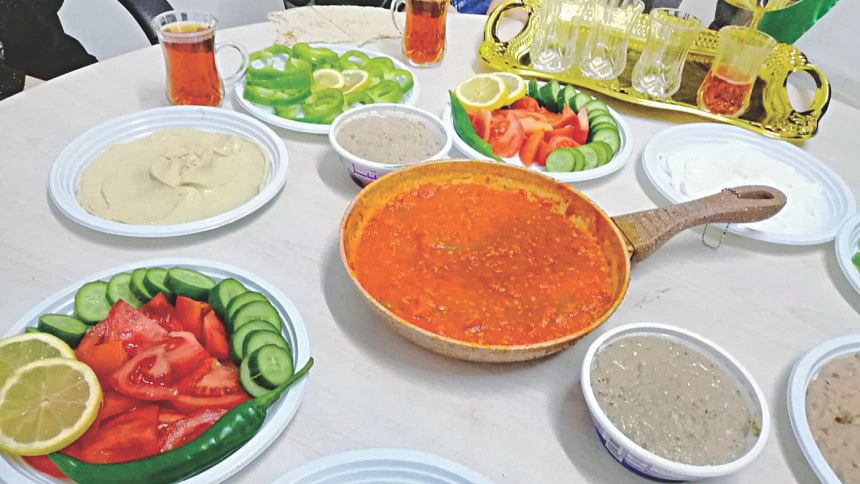
I rallied around with friends spread across the globe and requested (read pleaded/hounded) them to send me images of the food they ate at lunch in office, offering a unique glimpse into their food cultures and traditions.
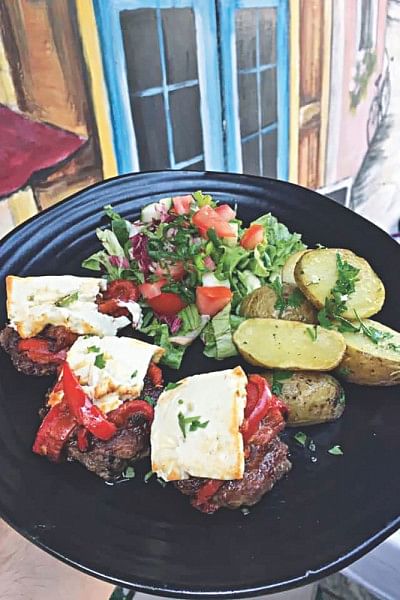
They made this massive effort of embarrassing their colleagues and themselves, by taking pictures of the food they ate every day. Some of my friends are blessed with canteens, and while there is a harmony in some of these images, meticulously planned by true foodies, many of them are clearly the work of a rushed, in-between meetings, quick bite! The end result is an ongoing list of almost 30 countries and I am pleased to share a few here.
Kosovo:
Second youngest nation of Europe, a medley of cultural influences
This little land locked country's cuisine is heavily influenced by neighbouring Albania, Serbia, Greece, etc. Honestly, most of the images I have seen resemble a very homely platter and just screams of healthy, flavoursome food. Normal lunch time for office goers is 12 PM, and according to my architect friend Arbenita, they mostly eat outside.
Indonesia:
Islands, Komodo dragons, Bali, and spicy food
Indonesia is the world's largest archipelago and thus, home to a staggering variety of cuisines, transcending across to food cultures in offices. Most of us are familiar with the more popular nasi goreng or beef rendang, or just something with noodles. But the Indonesians were only introduced to wheat when the Portuguese and Dutch arrived about 400-500 years ago. Add to this, the Spanish, in the 16th century, brought the chilli pepper from the new world, and the relish sambal, was created in the hot steamy settings of some Javanese village.
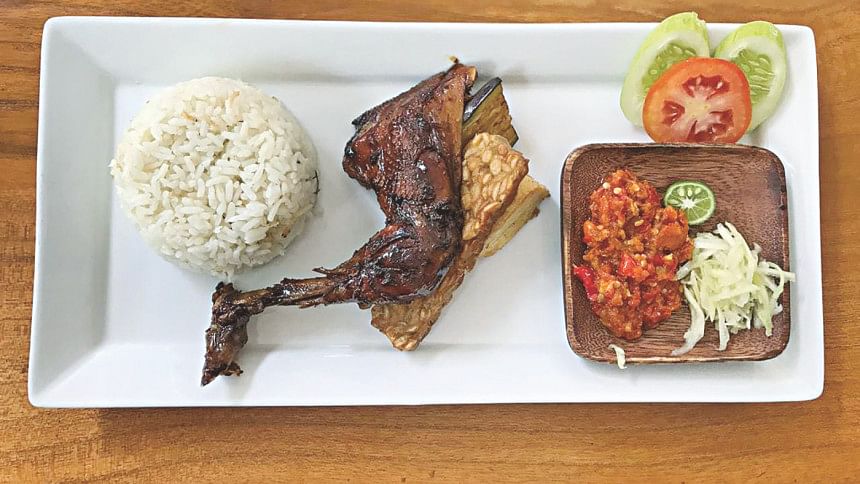
Today, Indonesian cuisine is a melange of tastes from Indian origins, Chinese settlers from the 7th century, as well as the largest Muslim population of any country, making the food supremely diverse, unique, and halal. These pictures were sent to me by Angeline Basuki, an architect and the next batch at my Heritage Management Masters course. All the dishes represent local food that is easily available anywhere and costs about $1.5!
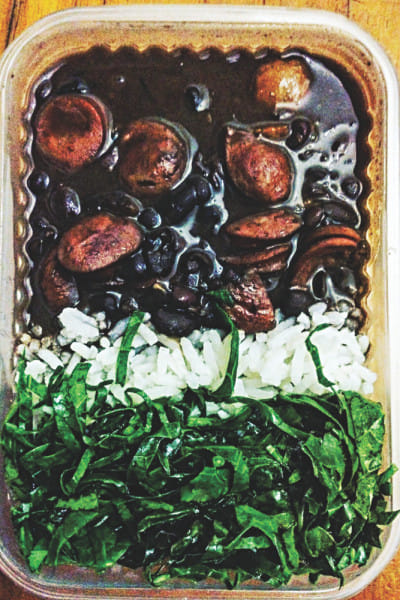
Brazil:
The Amazon, beaches, football, and samba
I had the amazing fortune of visiting Brazil, and other than the warmth people showed us, I was wowed by the cultural diversity — I hadn't realised that the Japanese formed a unique part of their culinary and cultural heritage! Generally, their food is all about meat and meat, and simply more meat, but they have loads of vegetables too. And then, you have a spectacular entry like Acai berries and the many beans and greens. Add to this, the Italian and Japanese influences and you start to see that Brazilian cuisine has a mind-blowing diversity.
Elisa Cerqueira, was one of our event caterers, and she sent me images of these lunch boxes prepared for her clients.
Jordan:
Petra, mansaf, ancient history, and the Dead Sea
When I arrived in Jordan, eagerly looking forward to the food there, I was enthusiastically informed by the locals that no visitor ever leaves without gaining at least 2 kg. I think I successfully left with 5 kg extra, and am still carrying it around, but that food tastes nothing less than magic!
The mansaf was a Middle Eastern version of our biriyani which had been heavily recommended to me, but my senses were entirely keyed in on the local cheeses, especially the Nabulsi, (originating from the Palestinian region of Nablus) which was also used in the to-die-for dessert Knafeh and the hung yoghurt, with herbs rolled into a ball of divinity.
This photo has been supplied to me by my dear friend Saed Essalaimeh, who is bemused at my love for food.
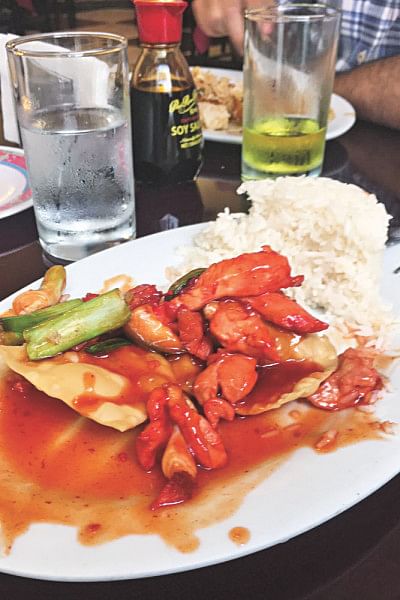
Peru:
Machu Pichu, llamas, and Lake Titicaca
Lunch in Peru begins between midday and 1 PM, and it is common for shops and offices to be shut at midday, with employees returning to work as late as 3 PM. Many Peruvians head home for lunch and given their variety of food, I wonder how they stay away from trying out all the different cuisines they have access to.
Chinese immigrants came mainly from the province of Guangdong in the late 19th and early 20th centuries, and they brought with them ingredients, and combined Peruvian ones to create Chifa cuisine. The main staple foods in Peruvian cuisine however are native crops such as corn, beans, and potatoes, as well as Andean quinoa and fresh fish.
A friend, forged through our common interest in heritage, Renata Tavara sent me these images from her office in the heritage sector of an organisation in the capital city of Lima.
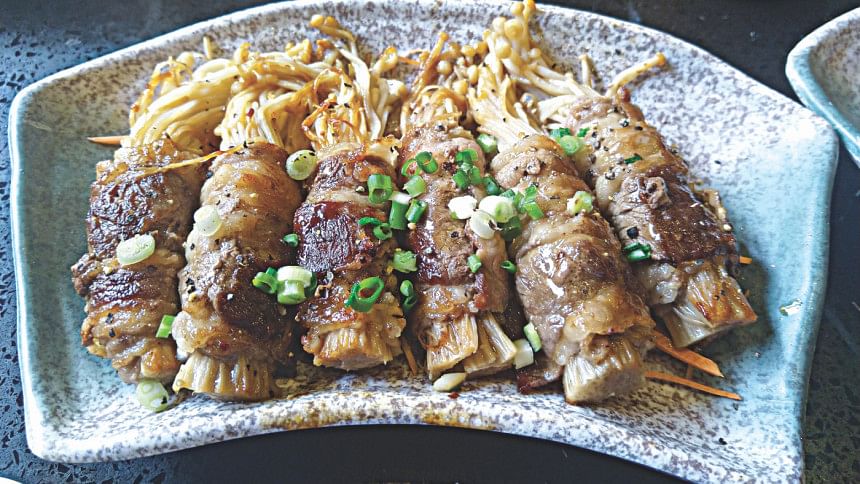
Japan:
The land of the courteous, sushi, and most of our cars!
My friend Hitoshi recently moved to Dhaka, and misses the platters he had back in Tokyo. Lunch time, according to Hitoshi, depends on the work type, so he often ate at his desk while working at a bank.
Some smaller companies, mostly factories, have set a lunch room to encourage communication, from 12 PM to 1 PM. At some offices, people can eat super early, from 11:30 AM to 12:30 PM, while later ones go from 12:30 PM to 1:30 PM, to cover each other during lunch time. However, in traditional families, Japanese housewives wake up as early as 5 AM to start cooking for their husbands and their kids' lunch box
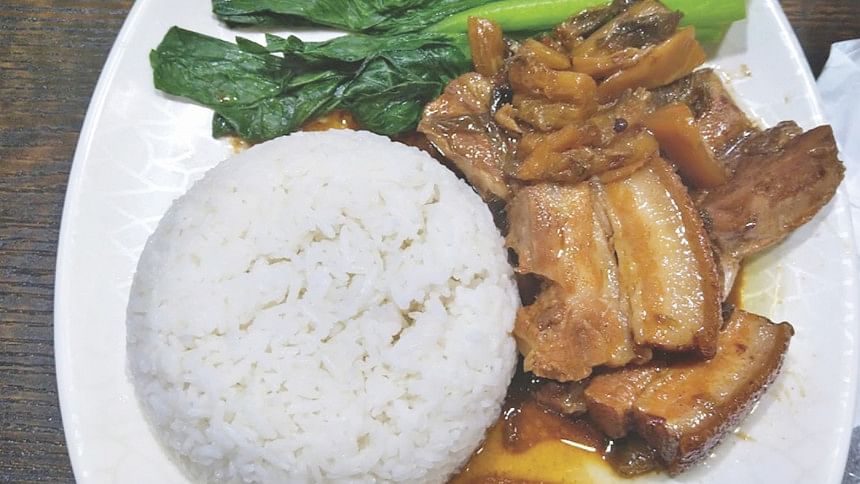
Macau:
Portuguese ex-colony, Patua-critically endangered language, Chinese-Portuguese fusion food
Macau is one of the tiniest countries, with a population that makes it the most populated one, as well as one of the richest ones!
A Portuguese colony until 1999, this tiny nation has a delightful medley of cultures and possibly, one of the first known instances of fusion food, mixing Chinese and Portuguese cuisines. Also known as the Las Vegas of Asia, its historic city centre ranks as a UNESCO World Heritage Site, while its language Patuá, is a creole language — a blend of Portuguese and Cantonese, recognised by UNESCO as a critically endangered one. My friend Jenny Kong's husband, based in Macau, sent me these images of his food.
This article was written with the purpose of showing how even a short break in our daily work routines involves a representation of our culinary heritage and eating trends. My friends gave me a sneak peek into their daily lives, and I too, leave you salivating and possibly, planning an elaborate meal for work. Until next time, with more countries in focus!
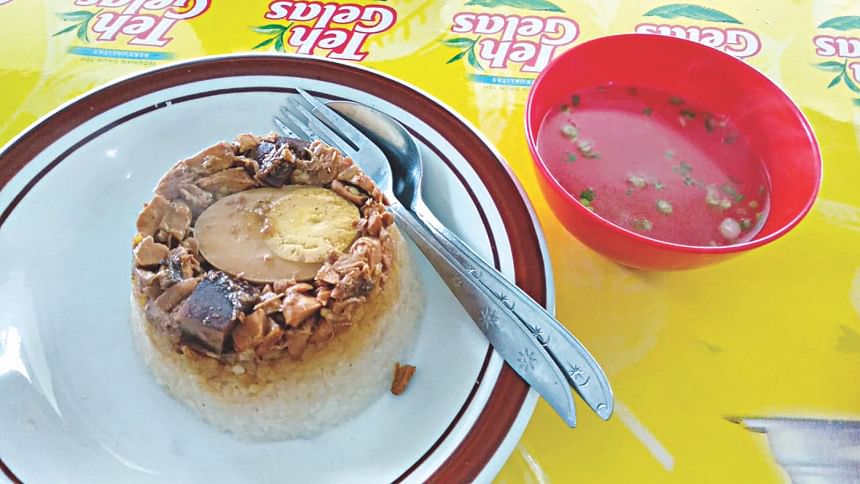
Photo courtesy: Reema Islam

 For all latest news, follow The Daily Star's Google News channel.
For all latest news, follow The Daily Star's Google News channel. 



Comments